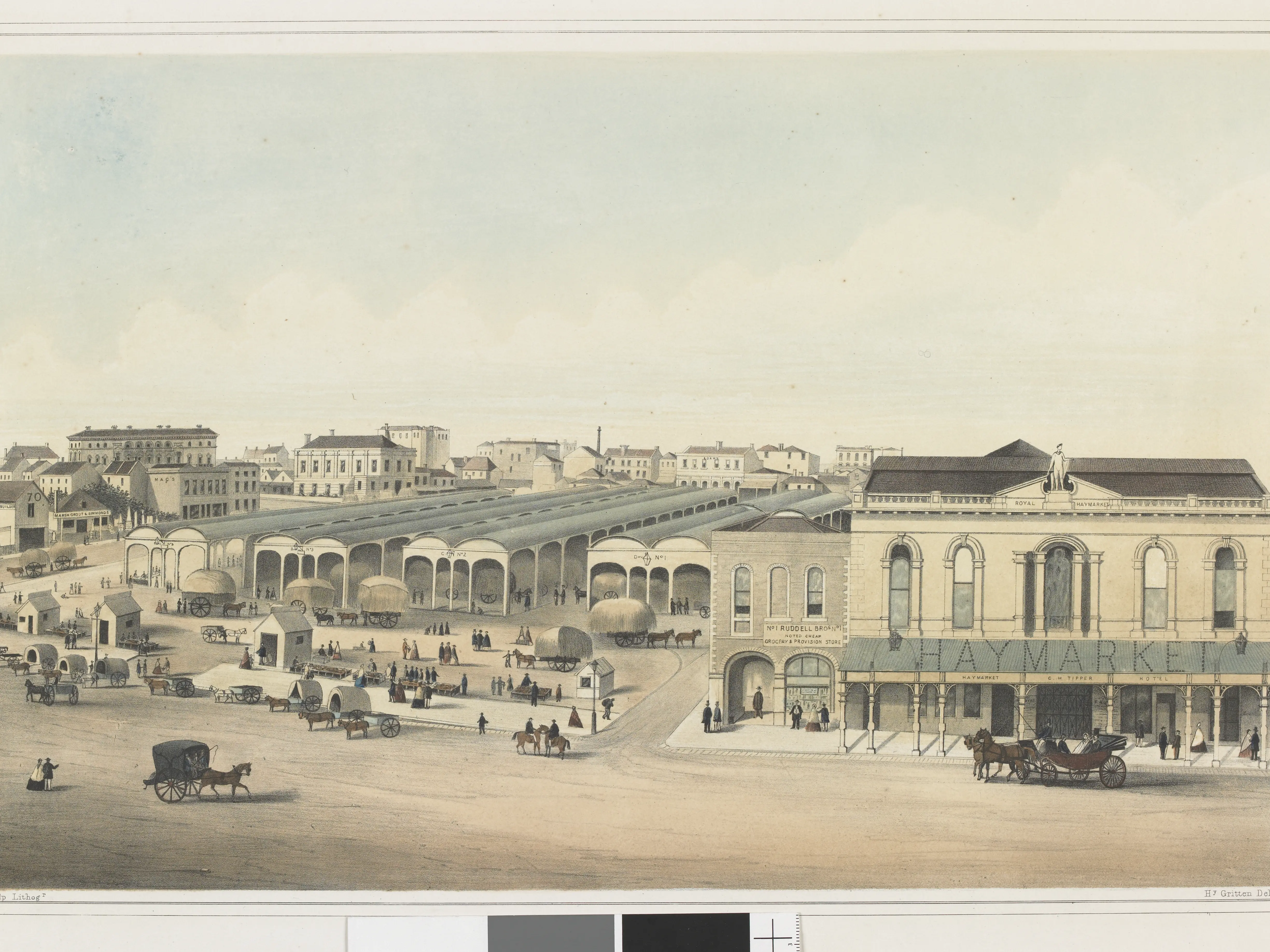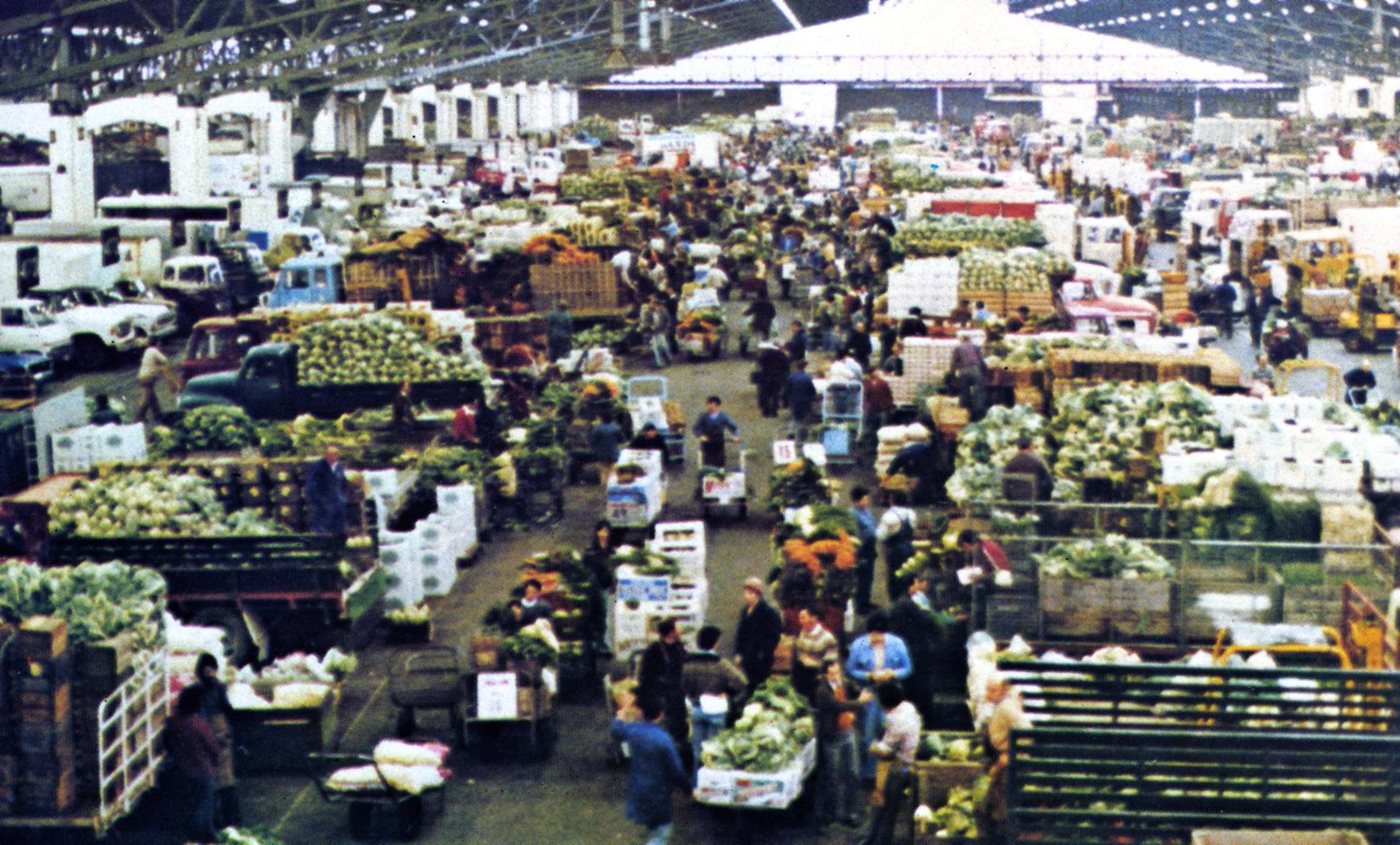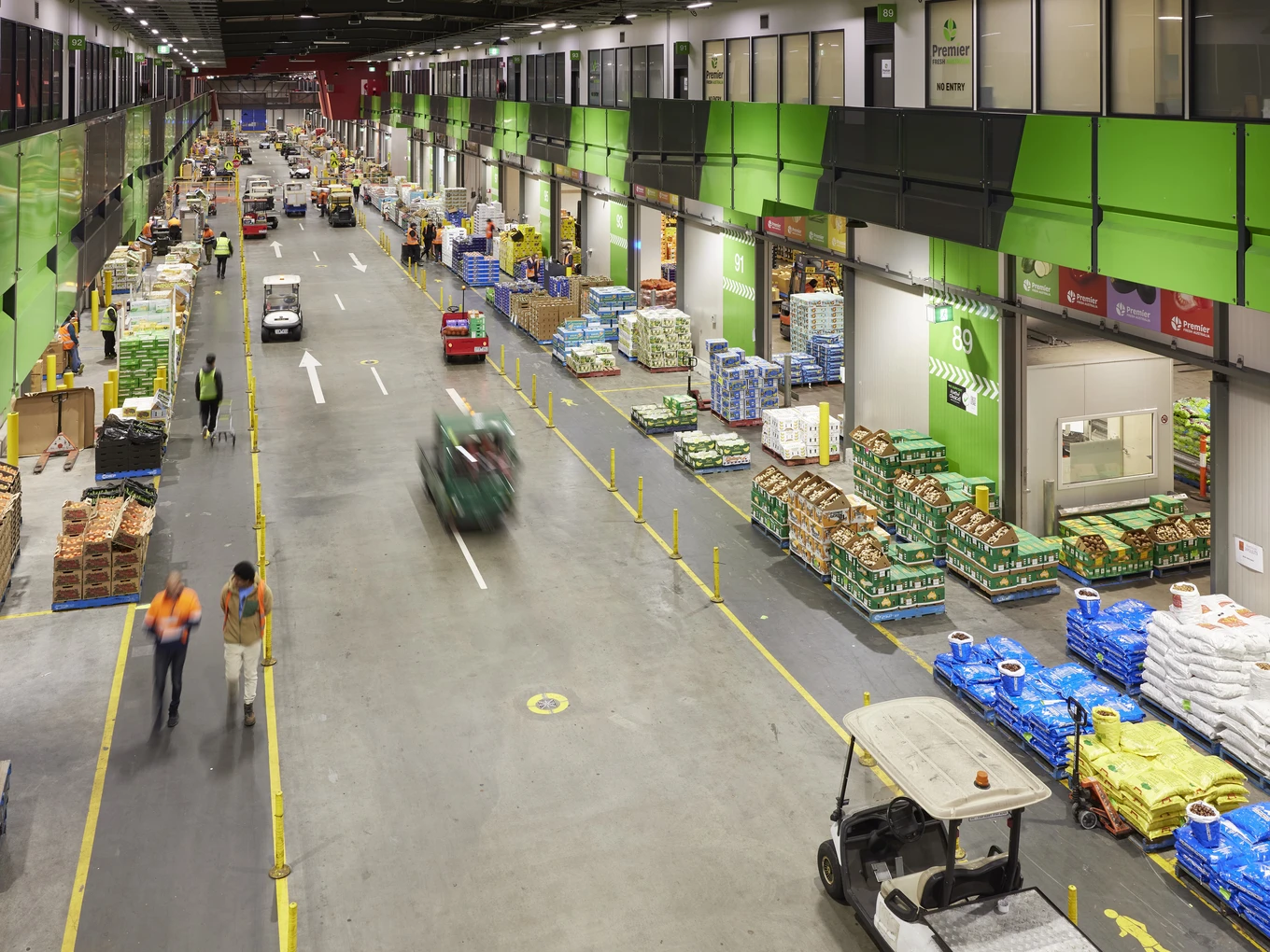- Home
- Trade at the Market
-
Market Operations
- About
- What's On
- A better choice!
- National Flower Centre

The wholesale trade of fruit and vegetables in Victoria began almost as soon as the lands were settled in the 1800s. Side of the road sales by local market gardeners occurred for only a few years before markets were established in Melbourne’s early central business district. Melbourne's population boom, driven by the Gold Rush in the mid-1800s, saw the city outgrow two central markets, with tenants moved to the newly built Queen Victoria Market in 1878.
Stands at Queen Victoria Market were in high demand, so wholesale agents and merchants would trade in the very early morning before vacating the stand for a retailer at around 8 am. Before the age of motor vehicles, horse-drawn carts were built to match the tramlines; so once the wheels had settled into the grooves, growers could snooze while their well-trained horses plodded on through the night.
As Victoria grew, so did the volume of trade. Fringe markets developed around Queen Victoria Market, with trade spilling out onto surrounding streets. In 1956, the City of Melbourne, who controlled all markets at the time, was granted an allotment of land on Footscray Road, West Melbourne, for the establishment of a two new markets; one for fish, the other for fresh produce which opened in 1969. And so Queen Victoria Market's 90-year reign as Melbourne's official central market came to an end.
The first official day in West Melbourne was the first of December, 1969. Victoria's Premier at the time, Sir Henry Bolte, described the building as "truly beautiful" and a "good investment for the future". The move to West Melbourne accelerated the shift to new ways of working; Growers and wholesalers started getting forklifts, and produce began to be packed and purchased on pallets. Alongside the Victorian Government, market users were also investing the fresh produce industry's future. Operating from different sites highlighted the differences between wholesale and retail trade, leading to the 1977 Melbourne Market Authority Act. The Act separated control of the Queen Victoria and Wholesale markets through the creation of a Market Trust. In 1993, The Act was amended to establish the Melbourne Market Authority (MMA) as the government Statutory Authority it runs as today.
One of the MMA's early initiatives was the establishment of the National Flower Centre on-site, which enabled flower growers and wholesalers to have permanent stands with cool rooms. Until then, flowers had been traded casually in the fruit and vegetable market.
It became apparent in the early 2000s that the market was again outgrowing its site. In 2004, the Victorian Government announced plans to construct a new Market at Epping on a 70-hectare slice of land. The vastly increased area enabled the consolidation of operations, more efficient movement and safer loading and unloading of produce.


In 2012, the new market's design was finalised and construction began. The modern, purpose-built design was based on businesses being able to conduct their tasks more easily, safely, and manage costs more appropriately. The new build is also more environmentally sound, with initiatives such as a central cooling plant and more than five thousand solar panels to reduce greenhouse gas emissions, as well as rainwater collection and capability that reuses approximately 52m litres per year.
All West Melbourne lease and licence holders were given a 'first right of refusal' to make the transition to Epping, with the vast majority deciding to move. In the interests of fairness and transparency, store, stand and parking locations were determined by ballot. In a remarkable feat by all market users, trade concluded at West Melbourne on a Friday and commenced that Monday morning at the brand new Epping site.
"It's been more than 10 years in the making...But this morning the new Epping Melbourne Wholesale Market site finally opened and things went surprisingly well." -The Weekly Times reports on the opening of the Epping Market.
Almost 180 years after Melbourne's first wholesale market was established, the Melbourne Market continues to grow and remains a bustling hive of activity. Generations of Victorians have contributed to making this Market what it is today, not only the Market community, but their families as well.